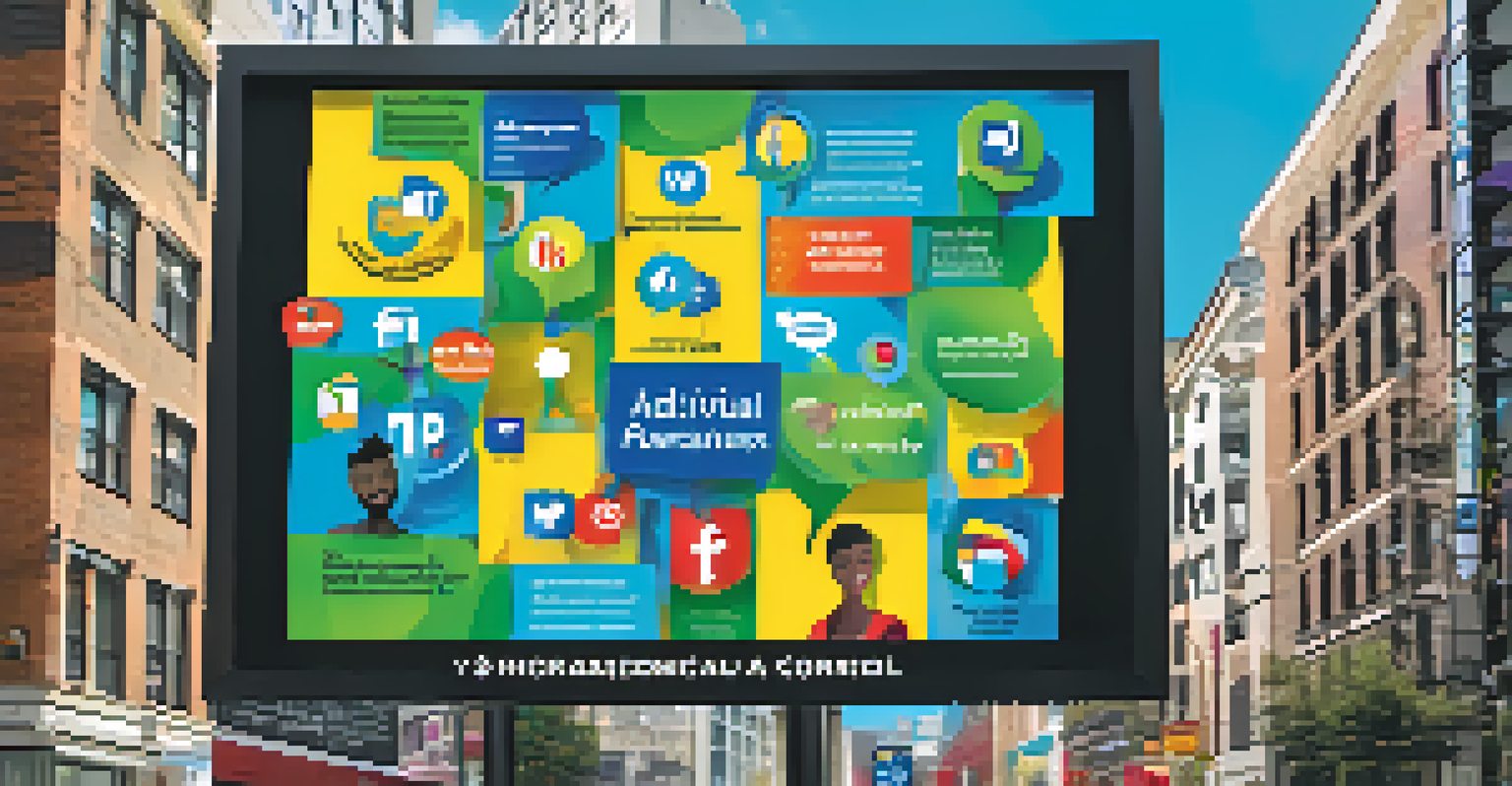The Power of Community Leaders in Addiction Awareness Campaigns

Understanding the Role of Community Leaders in Awareness
Community leaders play a crucial role in spearheading addiction awareness campaigns. They are often well-respected figures, which allows them to effectively communicate important messages to diverse audiences. Their positions enable them to bridge gaps between organizations and the community, ensuring that vital information reaches those who need it most.
The greatest gift is not being afraid to question.
By sharing their own experiences or those of others, community leaders can humanize the issue of addiction. This personal touch can resonate deeply with community members, fostering empathy and understanding. When people see someone they trust speaking about addiction, they are more likely to engage with the campaign and seek help if needed.
Furthermore, leaders can mobilize resources and volunteers to amplify the message. Their established networks can bring together various stakeholders, from healthcare professionals to local businesses, creating a comprehensive support system for addiction awareness initiatives.
Building Trust and Credibility in the Community
Trust is essential in any community, especially when addressing sensitive topics like addiction. Community leaders, often seen as pillars of their neighborhoods, have the ability to foster trust through their consistent involvement and genuine concern for the community's well-being. This trust enables them to effectively advocate for addiction awareness.

When leaders openly discuss the impact of addiction, it helps to break down stigma and encourages open dialogue. This openness can lead to increased participation in awareness programs, as people feel safer discussing their experiences and seeking help. Trust creates a supportive environment where community members can support one another.
Community Leaders Drive Awareness
Community leaders play a vital role in addiction awareness by sharing personal experiences and mobilizing resources for effective campaigns.
Moreover, credible leaders can provide accurate information and resources, ensuring that the community is well-informed. Their authority and experience can help dispel myths and misinformation surrounding addiction, leading to more effective prevention and treatment strategies.
Creating Inclusive Campaigns for Diverse Communities
Community leaders understand the unique needs and dynamics of their neighborhoods. This insight allows them to tailor addiction awareness campaigns to be more inclusive and relevant to diverse populations. By considering cultural, social, and economic factors, they can ensure that the message resonates with everyone.
Alone we can do so little; together we can do so much.
For instance, a leader might collaborate with local cultural organizations to present addiction resources in multiple languages. Such efforts help to eliminate barriers to access, making it easier for everyone to understand the issue and seek help. Inclusivity fosters a sense of belonging and encourages broader participation in awareness initiatives.
Additionally, by engaging with various community groups, leaders can identify specific challenges faced by different populations. This knowledge enables them to create targeted strategies that effectively address the unique circumstances of each group, ultimately leading to more successful outcomes.
Leveraging Social Media for Wider Reach
In today’s digital age, community leaders can harness the power of social media to amplify their addiction awareness campaigns. By creating engaging content, they can reach a wider audience and spark conversations about addiction that might not happen in person. Social media provides a platform for sharing personal stories, informative articles, and resources.
Leaders can also use platforms like Facebook, Instagram, and Twitter to organize virtual events and discussions. This not only makes the information accessible to more people but also encourages interaction and feedback. The more people engage with the content, the more likely they are to share it with their own networks, further spreading awareness.
Building Trust Is Key
Trust fostered by community leaders helps break down stigma around addiction, encouraging open dialogue and participation in awareness initiatives.
Moreover, social media allows for real-time updates and the ability to respond to community questions or concerns. This responsiveness helps build a dynamic dialogue, making it clear that the leaders are invested and available to support their community in addressing addiction.
Fostering Collaborations with Local Organizations
Community leaders often serve as connectors within their neighborhoods, bringing together various local organizations to tackle addiction awareness collaboratively. By forming partnerships with healthcare providers, schools, and non-profits, they can create a more comprehensive approach to education and prevention. These collaborations can enhance the effectiveness of campaigns by pooling resources and expertise.
For example, a local leader might partner with a healthcare organization to provide free workshops on addiction prevention. These workshops can educate the community about recognizing addiction signs and resources available for help. Such initiatives not only raise awareness but also empower community members to take proactive steps.
Additionally, these collaborations can lead to long-lasting relationships that extend beyond a single campaign. By working together, organizations can develop ongoing support systems, ensuring that addiction awareness remains a priority within the community.
Empowering Individuals through Education and Resources
Education is a powerful tool in addiction awareness campaigns, and community leaders can play a significant role in this aspect. By providing accurate information about addiction, its effects, and available treatments, leaders can empower individuals to make informed choices. Knowledge diminishes fear and stigma, creating a more supportive environment for those affected by addiction.
Leaders can organize workshops, seminars, or informational sessions that equip community members with the tools they need to understand addiction better. These initiatives can also include discussions about mental health, as the two are often interconnected. Educated individuals are more likely to recognize the signs of addiction, whether in themselves or others, and seek help.
Education Empowers Communities
By providing accurate information and resources, community leaders empower individuals to make informed choices and seek help for addiction.
Furthermore, providing access to resources, such as helplines or treatment centers, can significantly impact the community. Leaders can ensure that people know where to turn when they need support, fostering a proactive approach to addressing addiction.
Measuring the Impact of Community-Led Campaigns
To truly understand the effectiveness of addiction awareness campaigns, it’s crucial to measure their impact. Community leaders can implement surveys, interviews, and feedback sessions to gather insights from participants. This data can reveal what works well and what areas may need improvement, allowing for more effective future campaigns.
By analyzing changes in community attitudes towards addiction, as well as increased participation in programs, leaders can assess the overall success of their initiatives. For instance, a notable rise in individuals seeking help after a campaign can indicate that the awareness efforts were impactful.

Additionally, leaders can share this data with stakeholders to showcase the importance of continued support for addiction awareness initiatives. Demonstrating tangible results helps to secure funding and resources for future campaigns, ensuring that the community remains focused on addressing addiction effectively.